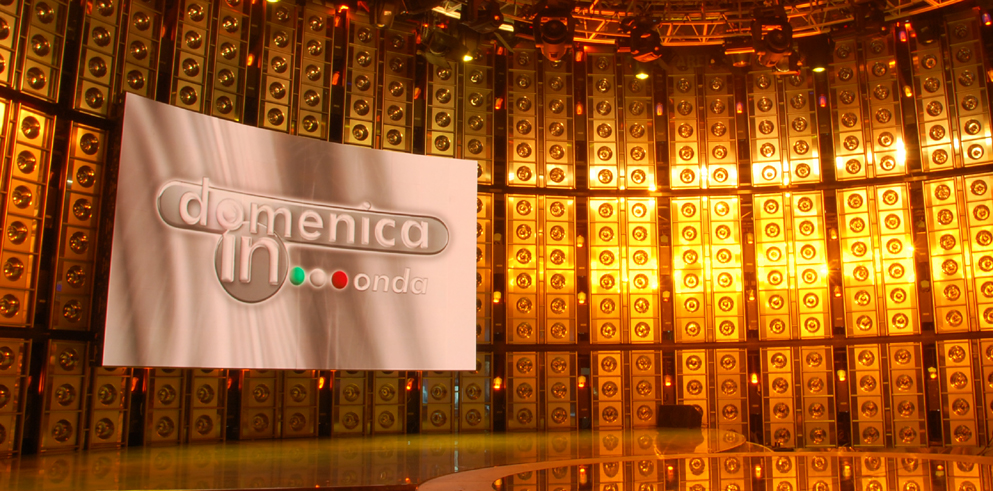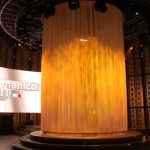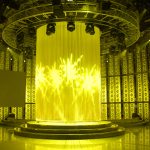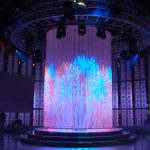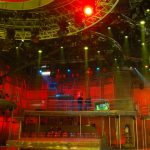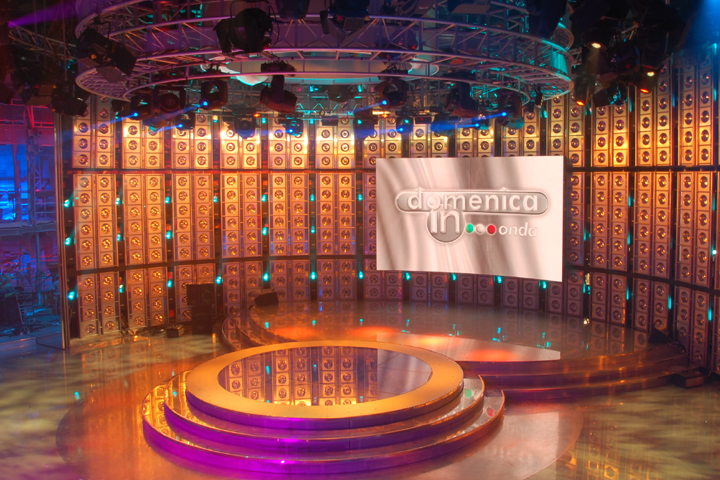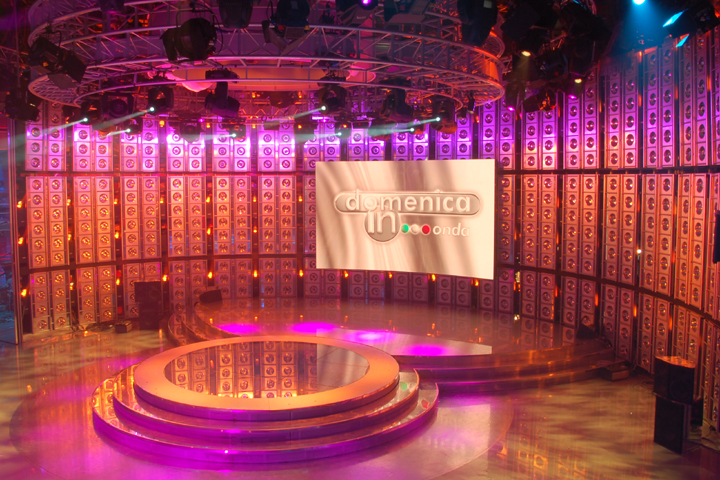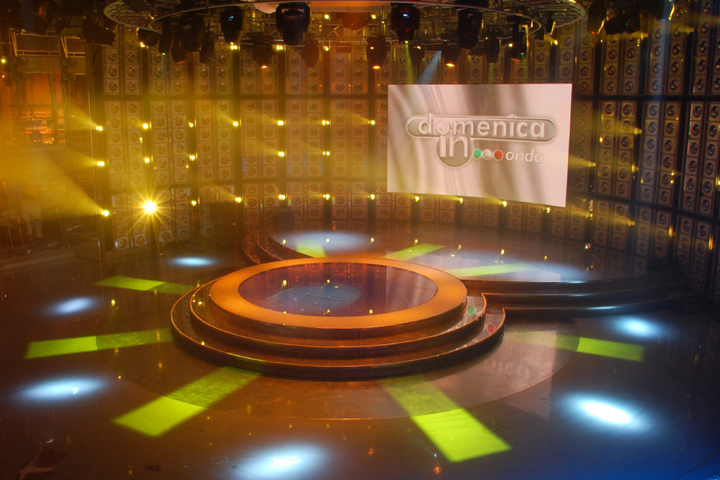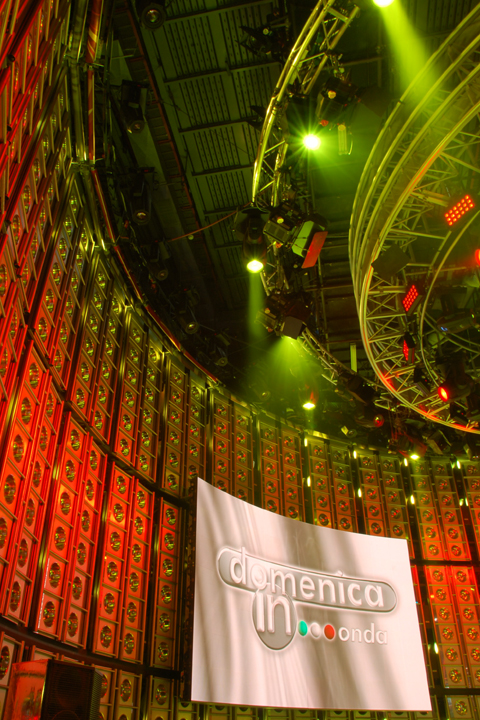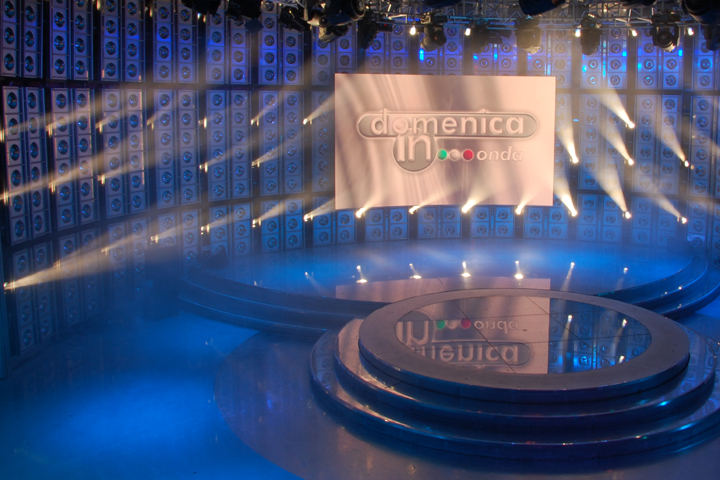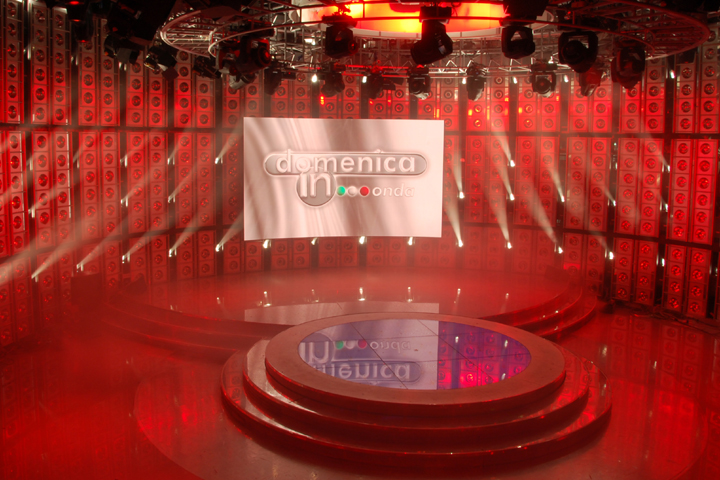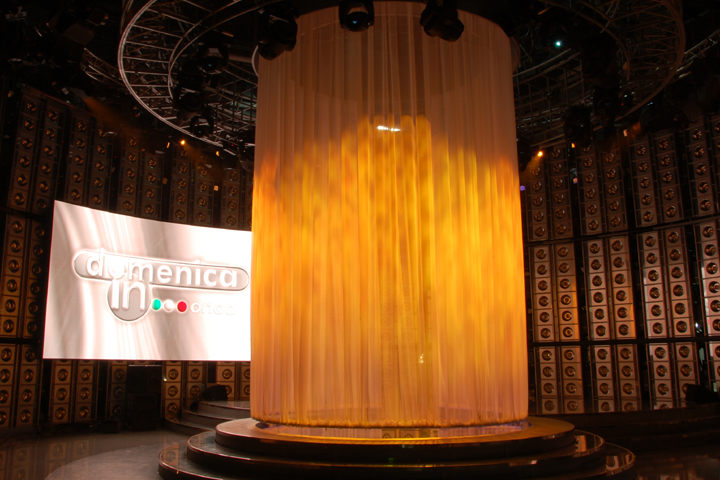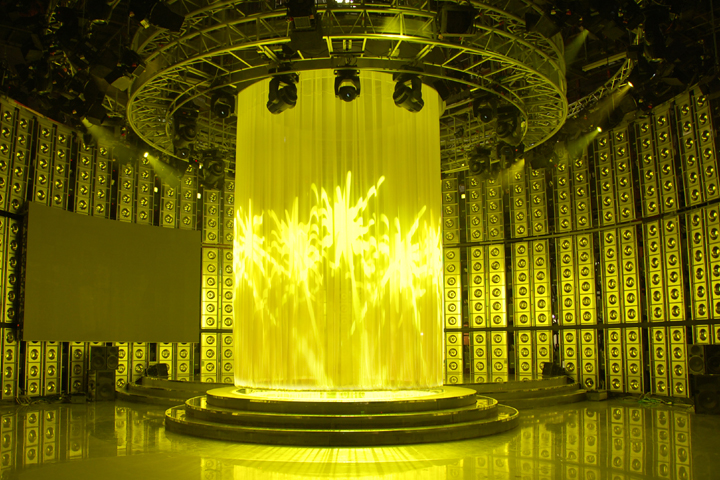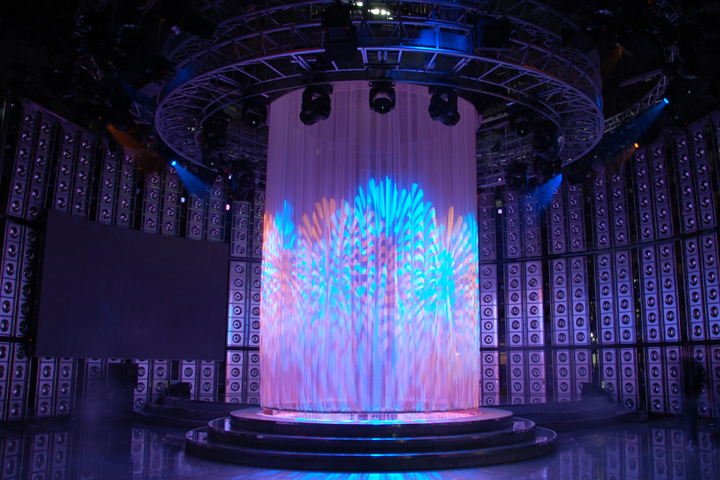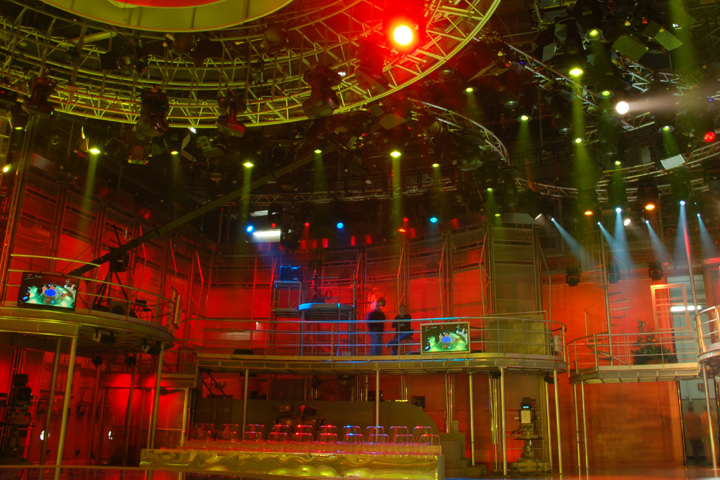Among the long-running entertainment programmes that state owned Italian public service broadcaster RAI hosts, “Domenica In” (Sunday In) is by far the oldest: 35 years of non-stop editions since 1976, when the absolute novelty of a six-hour continuous live entertainment show was introduced to Italian television.
Clay Paky was also founded in 1976 and has provided the vast majority of the lighting effects this year too. The rig includes about 120 intelligent lights consisting of Alpha Spot HPE 1200s, Alpha Spot HPE 700s, Alpha Spot HPE 300s and CP Color MHs, as well as numerous Clay Paky CP Spots as general accent lighting.
All the lighting equipment is supplied by PR Electronics.
The Director of Photography Fausto Carboni told us about the set lighting: “It was designed to adapt to three different programmes: ‘Domenica In’, ‘L’Arena’ (the arena), which is an integral part of ‘Domenica In’ but has different hosts and a different set, and ‘A casa di Paola’ (at Paola’s house), which instead has nothing to do with the other two, but which is recorded in the same studio (Nomentano 4). This studio sharing between productions has made it necessary to come up with a flexible lighting design, able to combine with the different sets and adapt to all the different shooting angles and director’s requirements.”
Marco Calzavara’s set is a true gem: a whole circular wall fitted to a motorized rotating platform without end-stop, which closes partially onto itself during “Domenica In” and “L’Arena” to increase the space available considerably. In this way the whole Nomentano 4 studio can be used for the two Sunday programmes.
“The circular wall consists of hinged aluminium panels with hundreds of steel bells inside. Each bell houses a halogen lamp. Light can therefore shine from the wall or the wall may reflect the illumination from the motorized lights,” said Carboni.
The lights are arranged as follows: Clay Paky Spot HPEs (1200W, 700W and 300W versions) are placed on battens hanging over the stage for the whole width of the studio, so that they may provide all types of lighting: front, side, stage, and end wall. Others are placed in the spaces between the panels that form the circular end wall to provide backlighting. Forty CP Color MH colour changers are on the other hand placed around the whole external perimeter of the studio so they can light the walls evenly. A high-resolution motorized modular ledwall (also semicircular to fit the wall) ensures perfect integration between the lighting and video components.
Fausto Carboni stressed the importance of the lighting in this particular edition of “Domenica In”: “Besides the massive use of effects during the musical breaks, this year there is a game completely based on the use of colour. It is called “colour interview” and is characterized by marked colour changes in the whole studio according to the topics dealt with. The colours of the various walls, the stage and the ledwall projections change symbiotically, immersing the guest in a charming colourful atmosphere that is conducive to intimacy.”
In order to have warm colours and fuller mixing, Carboni deemed it useful to order 6000K lamps, which Clay Paky lists in its catalogue as optional, instead of the standard 7500K lamps.
Another artistically profound slot is Lorella Cuccarini’s dance number, with a singer that performs live inside a large central veiled cylinder. Spectacular effects are projected onto the surface veils by the Alpha Spot HPEs, including, for example, a beautiful flame effect.
Carboni added: “for this edition I was really able to let loose: we had lots of different situations, so there were also lots of creative opportunities. I was able to set up all the lighting arrangements I had in mind with Clay Paky lights, which I have known and used for years. I used the various gobos a lot, sometimes in combination with animation discs, for truly spectacular morphing effects. Apart from two white lights, all the rest of the lighting equipment in the studio was pure graphics!”
One final thing that Fausto Carboni appreciated was the reliability of the lights: “With the forced alternation of three productions during the week and with the pace that live Sunday broadcasts of 6-7 hours require, the lights are virtually on seven days a week for 200 days a year. This heavy duty use is only possible if you can totally count on the lights you have, and if you know that there is a company ready and willing to listen and offer its support for every small problem you may have. In my experience, Clay Paky and its lights are the best guarantee of this reliability and immediate response.”
The lighting desk operator is Carlo Vanni and gaffer, Riccardo Cardini.
